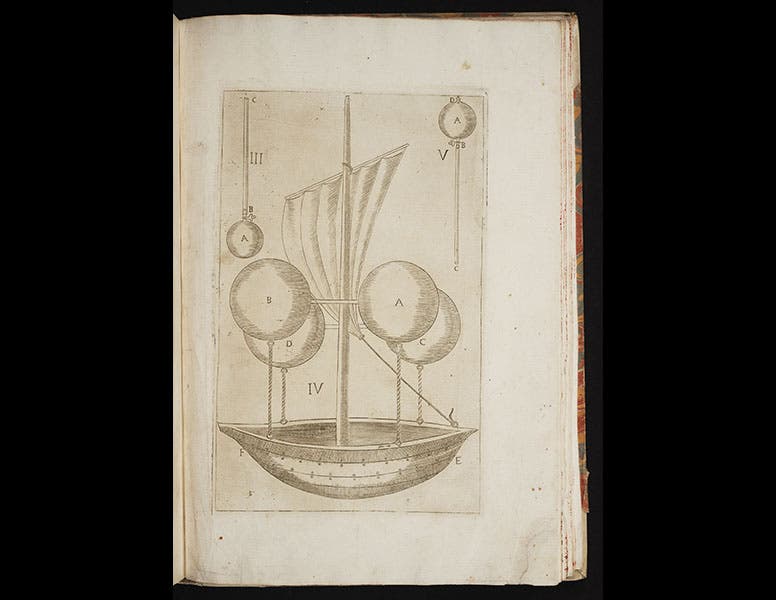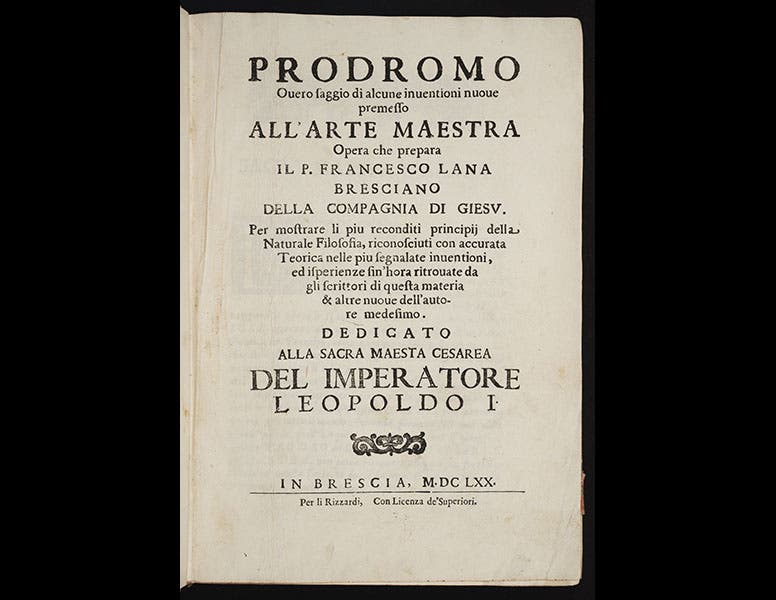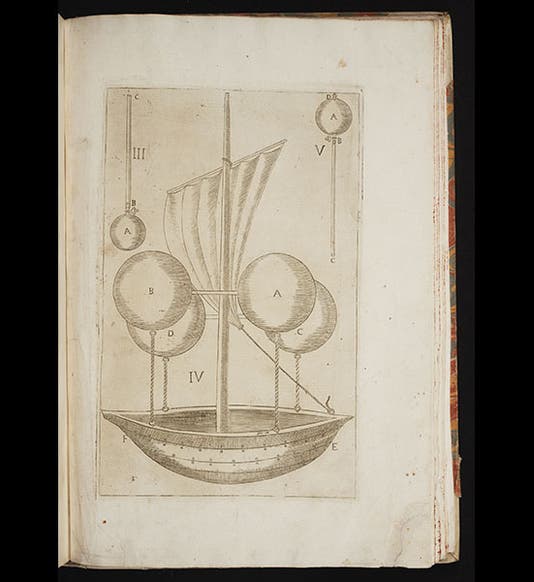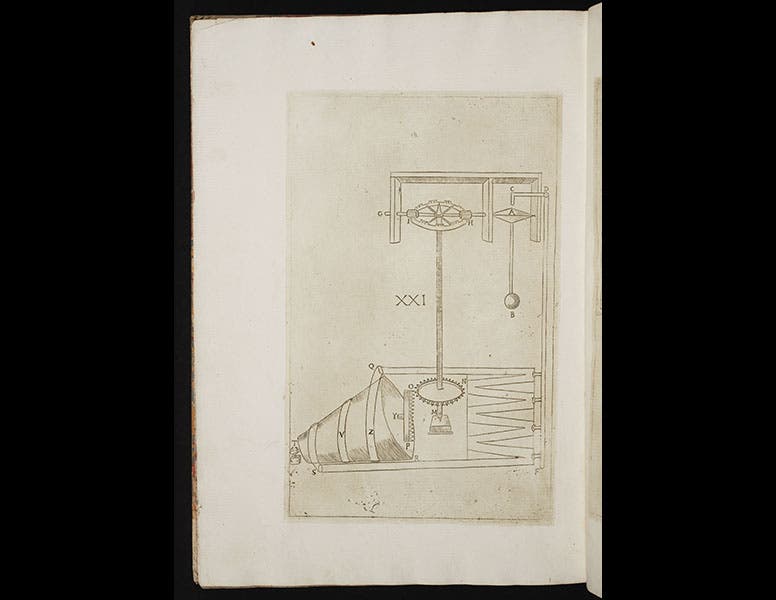Scientist of the Day - Francesco Lana Terzi

Linda Hall Library

Linda Hall Library

Linda Hall Library

Linda Hall Library
Francesco Lana Terzi, an Italian Jesuit scientist, died Feb. 22, 1687; his date of birth is unknown. Lana Terzi is best known for a book he published in 1670, Prodromo, and for a single illustration in that book, depicting an airship borne aloft by four evacuated copper spheres (first image). It is often said that he got the idea from Otto von Guericke's Magdeburg experiments with evacuated copper spheres, and indeed he did, but not from von Guericke directly, since his book did not appear until 1672, after the Prodromo was published. Fortunately, a fellow Jesuit, Gaspar Schott, published a summary of the Magdeburg experiments in 1657, with illustrations (third image), and this is almost certainly what stirred the imagination of Lana Terzi. It has also been often pointed out that Lana Terzi's airship would not work; in order to make the copper spheres light enough to float, they would have to be quite thin, and the atmospheric pressure would surely collapse them. But so what. All you have to do is replace the copper with something flexible, like cloth, and heat the air up, instead of evacuating it, and you would have a flying machine. Besides, you have to love the fact that the gondola for Lana Terzi's invention is an actual gondola, making this a true airship.
Lana Terzi's Prodromo depicts a number of other inventions that are rarely reproduced, except in monographs on perpetual motion, since many of Lana Terzi's machines fall under that rubric. Here again, he was probably prodded into imaginative action by Gaspar Schott, whose books contains dozens of perpetual motion machines, some of them ingeniously impossible. We show two of Lana Terzi’s above; a device for raising water (fourth image), and another for distilling water underground in order to produce artificial springs (fifth image).
The last illustration shows a perpetual motion clock, driven by a ball rolling down a ramp, which is raised back into position by an Archimedean screw. This plate was displayed in an exhibition on precision time-keeping at the Grolier club in New York City in 2016, curated by our former Rare Books Librarian Bruce Bradley. The exhibition was called On Time and consisted of 86 books from our Library loaned to the Grolier Club for the occasion. It was quite a splendid affair.
Dr. William B. Ashworth, Jr., Consultant for the History of Science, Linda Hall Library and Associate Professor, Department of History, University of Missouri-Kansas City. Comments or corrections are welcome; please direct to ashworthw@umkc.edu.








